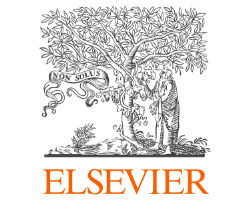A Novel Sep-Unet Architecture of Convolutional Neural Networks to Improve Dermoscopic Image Segmentation by Training Parameters Reduction
Abstract
Nowadays, we use dermoscopic images as one of the imaging methods in diagnosis of skin lesions such as skin cancer. But due to the noise and other problems, including hair artifacts around the lesion, this issue requires automatic and reliable segmentation methods. The diversity in the color and structure of the skin lesions is a challenging reason for automatic skin lesion segmentation. In this study, we used convolutional neural networks (CNN) as an efficient method for dermoscopic image segmentation. The main goal of this research is to recommend a novel architecture of deep neural networks for the injured lesion in dermoscopic images which has been improved by the convolutional layers based on the separable layers. By convolutional layers and the specific operations on the kernel of them, the velocity of the algorithm increases and the training parameters decrease. Additionally, we used a suitable preprocessing method to enter the images into the neural network. Suitable structure of the convolutional layers, separable convolutional layers and transposed convolution in the down sampling and up sampling parts, have made the structure of the mentioned neural network. This algorithm is named Sep-unet and could segment the images with 98% dice coefficient.
Downloads
References
C. Chen, J. Leng and G. Xu, “A general framework of piecewise-polynomial Mumford–Shah model for image segmentation,” International Journal of Computer Mathematics, vol.94, no.10, pp. 1981-1997, 2017.
C. Kaushal, K. Kaushal and A. Singla, “Firefly optimization-based segmentation technique to analyse medical images of breast cancer,” International Journal of Computer Mathematics, vol. 98, no. 7, pp. 1293-1308, 2021.
J. Bergstra, and Y. Bengio, “Random search for hyper-parameter optimization,” Journal of machine learning research, vol. 13, no. 2, 2012.
M. Taheri, M. Rastgarpour and A. Koochari, “A novel method for medical image segmentation based on convolutional neural networks with SGD optimization,” Journal of Electrical and Computer Engineering Innovations (JECEI), vol. 9, no. 1, pp. 37-46, 2021.
S. Ren, “Faster r-cnn, towards real-time object detection with region proposal networks,” Advances in neural information processing systems, vol.28, pp. 91-99, 2015.
C. Farabet, “Learning hierarchical features for scene labeling,” IEEE transactions on pattern analysis and machine intelligence, vol. 35, no. 8, pp. 1915-1929, 2015.
A. Karpathy, and L. Fei-Fei, “Deep visual-semantic alignments for generating image descriptions,” IEEE conference on computer vision and pattern recognition, 2015.
Y. Taigman, “Closing the gap to human-level performance in face verification deepface,” In Proceedings of the IEEE Computer Vision and Pattern Recognition (CVPR).
A. Toshev, and C.D. Szegedy, “Human pose estimation via deep neural networks,” CVPR. Columbus, Ohio, pp. 1653-1660, 2014.
T. Y. Tan, “Evolving ensemble models for image segmentation using enhanced particle swarm optimization,” IEEE access, vol. 7, pp. 34004-34019, 2019.
O. Ronneberger, P. Fischer and T. Brox, “U-net: Convolutional networks for biomedical image segmentation,” International Conference on Medical image computing and computer-assisted intervention, 2015.
Q. Zhang, B. Li, and F. Zhang, “A MOEA/D approach to exploit the crucial structure of convolution kernels,” Tenth International Conference on Advanced Computational Intelligence (ICACI), 2018.
T. Y. Tan, L. Zhang, C.P. Lim, B. Fielding, Y. Yu, and E. Anderson, “Evolving ensemble models for image segmentation using enhanced particle swarm optimization,” IEEE access, vol. 7, pp. 34004-34019, 2019
C. C. Chen, “Medical image segmentation with adjustable computational complexity using data density functionals,” Applied Sciences, vo. 9, no. 8, pp. 1718, 2019.
D. Abdelhafiz, “Convolutional neural network for automated mass segmentation in mammography,” BMC bioinformatics, vol.21, no.1, pp. pp. 1-19, 2020.
N. Feng, X. Geng, and L. Qin, “Study on MRI medical image segmentation technology based on CNN-CRF model,” IEEE Access, vol. 8, pp. 60505-60514, 2020.
N. Dong, “Neural architecture search for adversarial medical image segmentation,” International Conference on Medical Image Computing and Computer-Assisted Intervention, Springer, 2019.
W. Zhang, “Deep convolutional neural networks for multi-modality isointense infant brain image segmentation,” Neuro Image, vol. 108. pp. 214-224, 2015.
Y. Ding, “Using deep convolutional neural networks for neonatal brain image segmentation, Frontiers in neuroscience,” vol. 14, pp. 207, 2020.
J. Bernal, K. Kushibar, D. S. Asfaw, S. Valverde, A. Oliver, R. Martí and X. Lladó, “Deep convolutional neural networks for brain image analysis on magnetic resonance imaging,”vol. 95, pp. 64-81, 2019.
D. Dai, C. Dong, S. Xue, Q. Yan, Z. Li, C. Zhang and N. Luo, “A novel multi-scale residual encoding and decoding network for skin lesion segmentation,” Medical Image Analysis, vol. 75, pp. 102293, 2022.
B. Hafhouf, A. Zitouni, A. C. Megherbi, and S. Sbaa, “An Improved and Robust Encoder– Decoder for Skin Lesion Segmentation,” Arabian Journal for Science and Engineering, pp. 1-15, 2022.
T. Mendonca, Data from: A pusblic database for the analysis of dermoscopic images, Dermoscopy image analysis, [Online] available at https: //www.fc.up.pt, 2015. [Accessed: Jan. 5, 2022].
N. C. Codella, “Data from: Skin lesion analysis toward melanoma detection,” International symposium on biomedical imaging (isbi), 2017, [Online] available at https: //challenge.isic-archive.com, [Accessed: Jan. 8, 2022].

























